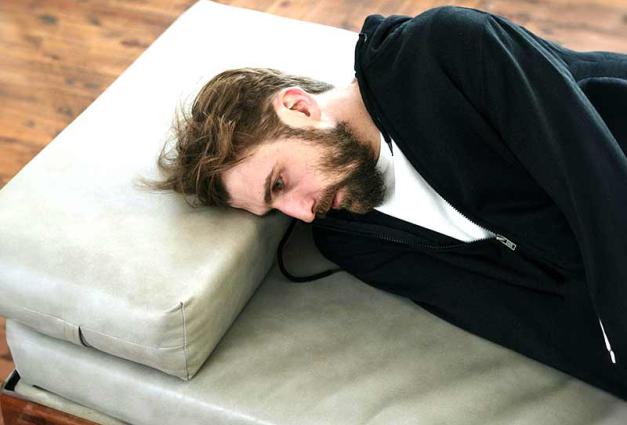In my early years as a professor, very few gay students came out to me or their peers. Today, my students are very open about their sexuality and this openness is undoubtedly linked to the greater acceptance of gay rights in the United States and worldwide. For example, in 1972, 61% of U.S. respondents agreed that a gay person should not be allowed to speak publicly; in 2018, only a small minority (12%) agreed. The majority of U.S. respondents now support gay marriage and gay rights have been upheld in recent U.S. Supreme Court decisions.
Scholars have long been interested in why some individuals are more accepting of sexual minorities than others. The most prejudiced people tend to have fundamentalist religious beliefs, less education, and less interaction with gay people. They are also more likely to be heterosexual men.
My research collaborator, Bernie Whitley, and I have focused on this gender difference in anti-gay prejudice. Over two decades ago, we conducted a review of studies reporting attitudes toward homosexuality. We were especially interested in comparing men’s and women’s attitudes toward gay people and found strong evidence that men were less accepting than women. This gender difference was especially large for attitudes toward gay men; in contrast, men’s and women’s attitudes toward lesbians were quite similar.
Why Would Straight Men Be Especially Rejecting Of Gay Men?
Bernie and I proposed that the root lies in the gender belief system. This belief system includes culturally prescribed ideas about men’s and women’s characteristics and roles. Also important are people’s attitudes about those who violate gender-role norms. Although today we see increased acceptance of gender as non-binary, the idea that gender is “either/or” persists. That is, the most common assumption is that one is either masculine or feminine, with no middle ground. Moreover, most people believe that if someone has a masculine (or feminine) appearance they also have masculine (or feminine) traits and engage in male-(or female-) associated behaviors.
An important key to our analysis is that these gender roles are more rigid for men than for women. Men are expected to be strong and in control and to strive for power and success. To many heterosexual men, the suggestion that they do not measure up to these ideals is threatening and, if that happens, they will work hard to prove their masculinity.
How does a man “prove” his masculinity? One way is to reject all things feminine and, because gay men are stereotypically viewed as feminine, to reject them in particular. In contrast, women’s gender roles are more flexible and women are less troubled by the idea that they are “not feminine enough.” Because of this, women do not need to assert their femininity, nor do they need to reject gay men or lesbians.
But Haven’t Times Changed?
Much has changed in society since we did our review. Isn’t it possible—if not likely—that the gender difference in our earlier work has disappeared? We set out to update our review and located a much larger and more recent set of studies to test this idea. Much to our surprise, the gender difference we observed in 1996 showed little evidence of change: we found that men’s attitudes were still more negative than women’s and this gender difference was still much larger when attitudes toward gay men, rather than lesbians, were assessed.
National survey data generally show that younger people are more accepting of gay rights than older people. But another unexpected finding in our study was that the gender difference was larger for college students and smaller among general adult samples or groups of professionals, such as mental health providers or physicians. We do not have a ready explanation for this finding; it might be due to differences in the way the research was conducted in the different groups.
And here is another thought-provoking finding: The attitude findings depend on what question is asked. For example, women and men hold more similar attitudes about gay rights than about gay men and lesbian people.
Let me clarify: Our results are about the difference in men’s and women’s attitudes. This does not negate the fact that there has been a marked increase, overall, in acceptance of gay people and gay rights. Both men’s and women’s attitudes became more positive, even as the size of the gender difference remained stable. We think this means that men’s attitudes are still influenced by the prescriptive power of the male gender role. Our findings also validate the experiences of the many gay people who are subjected to prejudice and discrimination due to their sexuality.
Times are changing, but anti-gay prejudice continues in many forms.
For Further Reading
Kite, M. E., Whitley, B. E., Jr., Buxton, K., & Ballas, H. (2021). Gender differences in anti-gay prejudice: Two decades of stability and change. Sex Roles, 85(1), 721–750. https://doi.org/10.1007/s11199-021-01227-4
Bosson, J. K., Vandello, J. A., & Caswell, T. A. (2013). Precarious manhood. In M. K. Ryan & N. R. Branscombe (Eds.), The SAGE handbook of gender and psychology (pp. 115-130). Sage. https://doi.org/10.4135/9781446269930.n8
Herek, G. M. (2000). The psychology of sexual prejudice. Current Directions in Psychological Science, 9(1), 19-22. https://doi.org/10.1111/1467-8721.00051
Kite, M. E., & Bryant-Lees, K. B. (2016). Historical and contemporary attitudes toward homosexuality. Teaching of Psychology, 43(2), 164-170. https://doi.org/10.1177/0098628316636297
Mary E. Kite is Professor of Social Psychology at Ball State University. Her research focuses on how our beliefs about gender roles influence anti-gay prejudice and ageism.




